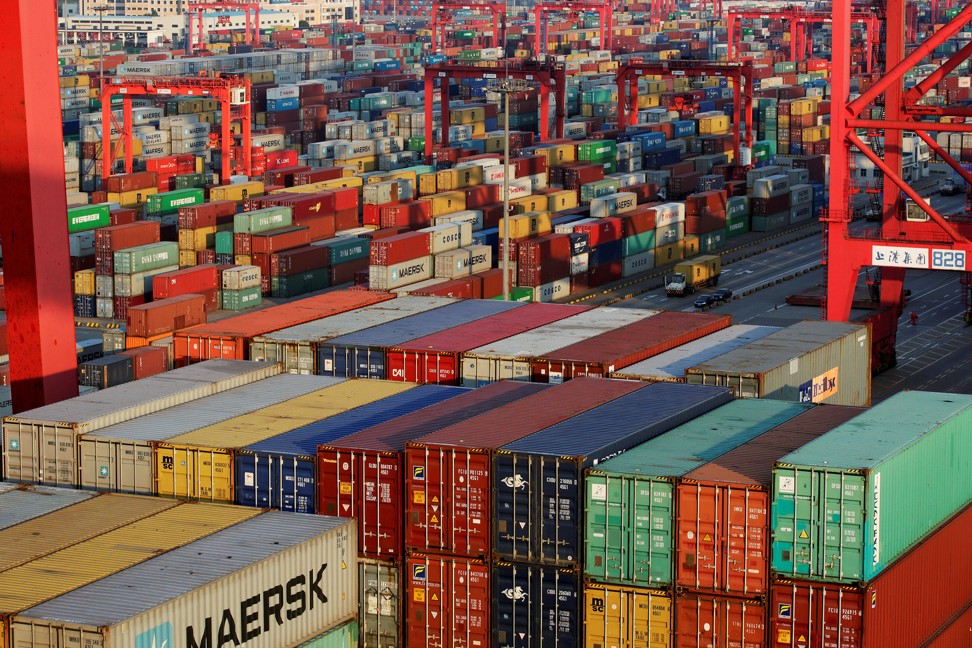
China’s trade gap with US narrows, but Donald Trump is unlikely to be smiling about it
January surplus falls 14.5 per cent from December, but rises 2.3 per cent from a year earlier, according to customs data
China’s trade surplus with the United States in January narrowed from December to US$21.9 billion, but the improvement is unlikely to do much to ease tensions between the world’s two largest economies, analysts said.
The reason for that is that while the gap narrowed by US$3.7 billion, or 14.5 per cent, from December, it actually rose by US$500 million, or 2.3 per cent from January 2017, according to figures released by the General Administration of Customs on Thursday.
Furthermore, while the monthly improvement appeared sizeable, China’s overall trade surplus in January shrank by 60 per cent from December, the figures showed.
A year on from Donald Trump entering the White House, bilateral trade remains a huge bone of contention between Washington and Beijing, with former top US trade negotiator Wendy Cutler saying this week that punitive action from the US on China was imminent.
“China’s overall surplus shrank, but the gap with the US barely narrowed,” said Zhou Hao, a senior economist at Commerzbank in Singapore.
“This suggests that the trade imbalance with the US is a structural problem, and will be there as long as the US economy is on a recovery trajectory.”
Adjusting that structure and finding alternative destinations for its goods would take China time, but it was unclear how much longer the US would be prepared to wait, Zhou said.
“Trump has toughened his overall stance toward China, but he is also fickle,” he said.
Raymond Yeung, chief economist for Greater China at ANZ, said that while more “noise” from the Trump administration on the trade imbalance was inevitable, the chances of an all-out trade war were slim.
“The actions and reactions [by the US and China] have been there for a decade,” he said. “I don’t see any sign of a trade war happening this year.”
Trump has, however, taken some concrete steps to deliver on his campaign promise to reduce the United States’ trade deficit. Last month, he implemented a 30 per cent tariff on all imports of solar panels and washing machines. China is the world’s largest producer of solar panels.
Yeung, however, said that the duty on solar panels was “actually doing China a favour”, as it would help it to reduce overcapacity in the industry.
Also, China’s shipments to the US accounted for just 0.6 per cent of its total solar panel exports, he said.
In a countermove, Beijing on Sunday launched an anti-dumping and anti-subsidy investigation into imports of sorghum from the US, an action likely to immediately hit demand for the product.
While the US has long accused China of unfair trade practices, Beijing insists that its trade surplus is the result of an economic reality and not contrived.
The US Commerce Department said in January that the United States’ trade deficit with China rose to a record US$375 billion in 2017, from US$347 billion a year earlier. Beijing agreed that its surplus with the US had reached a new high, but put the figure at US$275.8 billion.
China’s customs agency said on Thursday that in dollar terms, imports from the US in January rose 26.5 per cent year on year, compared with a 36.9 per cent gain for all imports.
Exports to the US, meanwhile, rose 12.7 per cent, against an 11.1 per cent rise for all foreign shipments.
China’s economic figures for the first two months of each year are distorted by the fact that its factories and offices close for several weeks for the Lunar New Year holiday. This year’s holiday runs from February 15-21, later than last year, when it began in January.



